Research and Discussion Based on the TON Ecosystem.
Written by: Jiaze
Introduction:
With the rapid development of blockchain technology, Web3 has become the focus of discussion. Decentralized applications, smart contracts, and digital asset management form the basic framework of Web3, marking the arrival of a revolutionary new digital era. In this context, the messaging application Telegram, with its deep integration with The Open Network (TON), is likely to become the "WeChat" of the Web3 era. TON is a highly scalable blockchain network designed to address the limitations of existing technologies, providing speed, scalability, and a user-friendly experience. This article will discuss the opportunities that the TON ecosystem brings to Telegram and whether it can achieve a market-dominant position in Web3 similar to that of WeChat in daily life.
TON: Background and Development History
The Open Network (TON) was originally named Telegram Open Network and was initiated in 2017 by Nikolai Durov, the brother of Telegram founder Pavel Durov. The goal of TON was to create a highly scalable, easy-to-use layer network.
In 2018, TON raised approximately $1.7 billion through an ICO, attracting the attention of the U.S. Securities and Exchange Commission (SEC). The SEC subsequently filed a lawsuit against TON, accusing its ICO of being an illegal securities offering. In 2020, under legal pressure, Telegram withdrew from the TON project and handed over the development work to the open-source developer community, officially renaming it The Open Network (TON). In 2021, the TON Foundation took over the project and continued to promote the development of the TON ecosystem. In 2023, Telegram re-established its connection with TON, integrating it as a Web3 infrastructure within Telegram.
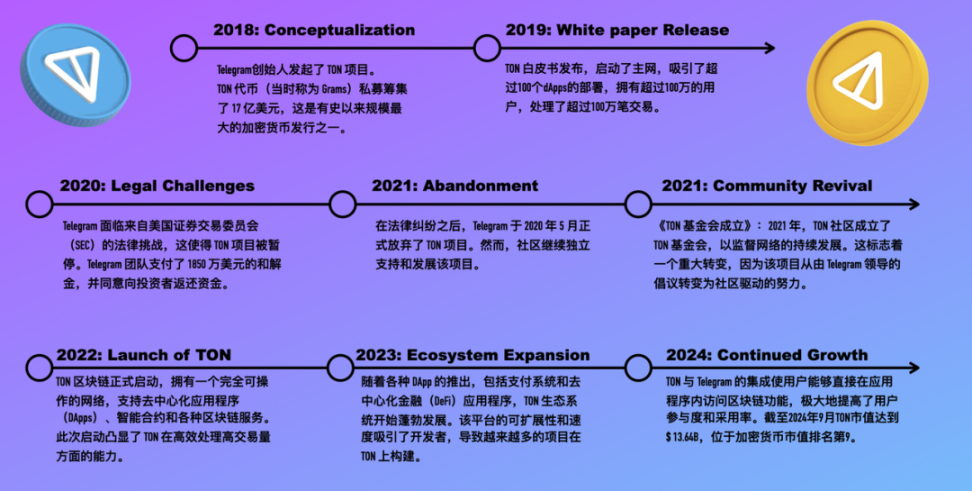
Deep Integration of Telegram and TON: Advantages for Users and the Ecosystem
Since its inception, Telegram has been known for its privacy protection and powerful communication features. As of 2024, Telegram's monthly active users have reached 900 million, a 12.5% increase from last year, making it the second largest messaging app after WhatsApp, WeChat, and Messenger.
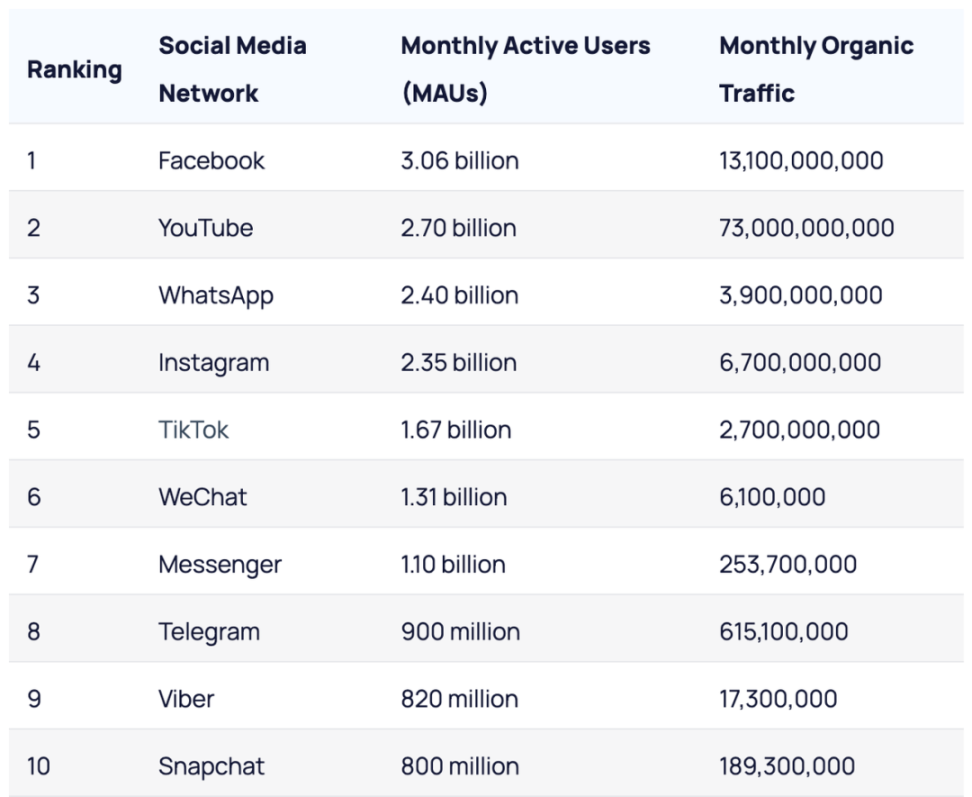
The large user base provides a natural foundation for the development of the TON ecosystem. By integrating the TON ecosystem, Telegram not only retains its original Web2 communication functions but also further develops towards Web3, offering features such as cryptocurrency payments, digital asset management, and support for decentralized applications (dApps). Telegram has a traffic advantage, while TON brings payment and transaction functionalities, making them a perfect complement to each other, something that other public chains or social platforms find hard to achieve. Through deep integration with Telegram, the current mini apps cover a wide range of categories, including staking, wallets, CEX, and more than 20 types of applications.
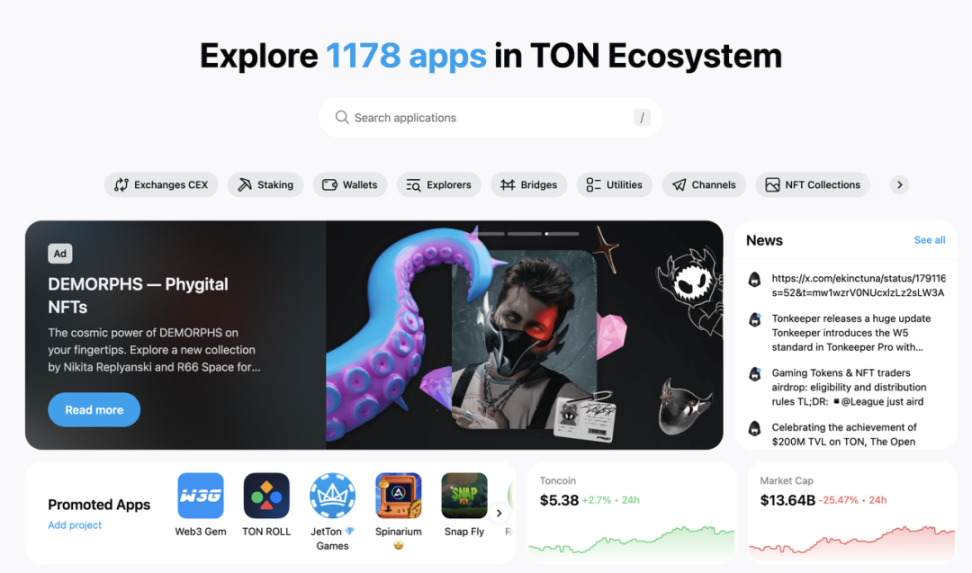
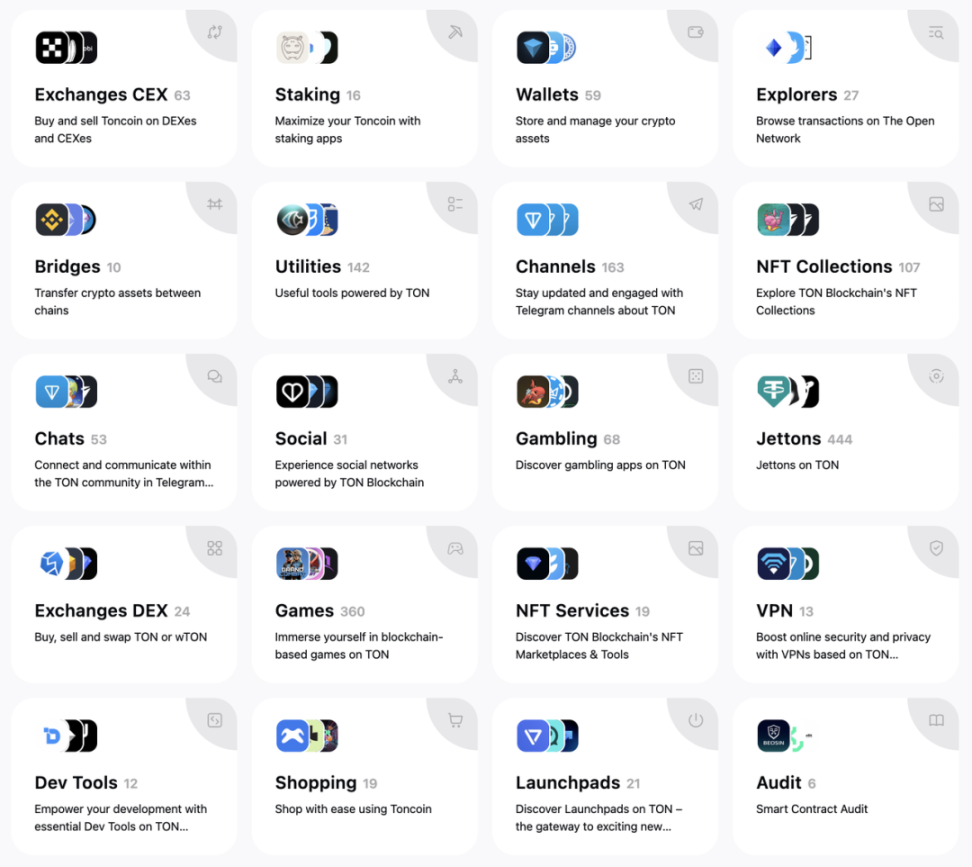
In comparison to the development of WeChat Pay in China, which extended its internal payment capabilities to create a series of embedded applications such as e-commerce, ride-hailing, and gaming, users do not need to switch to a payment application; their needs can be met directly within WeChat, truly achieving an all-in-one integration.
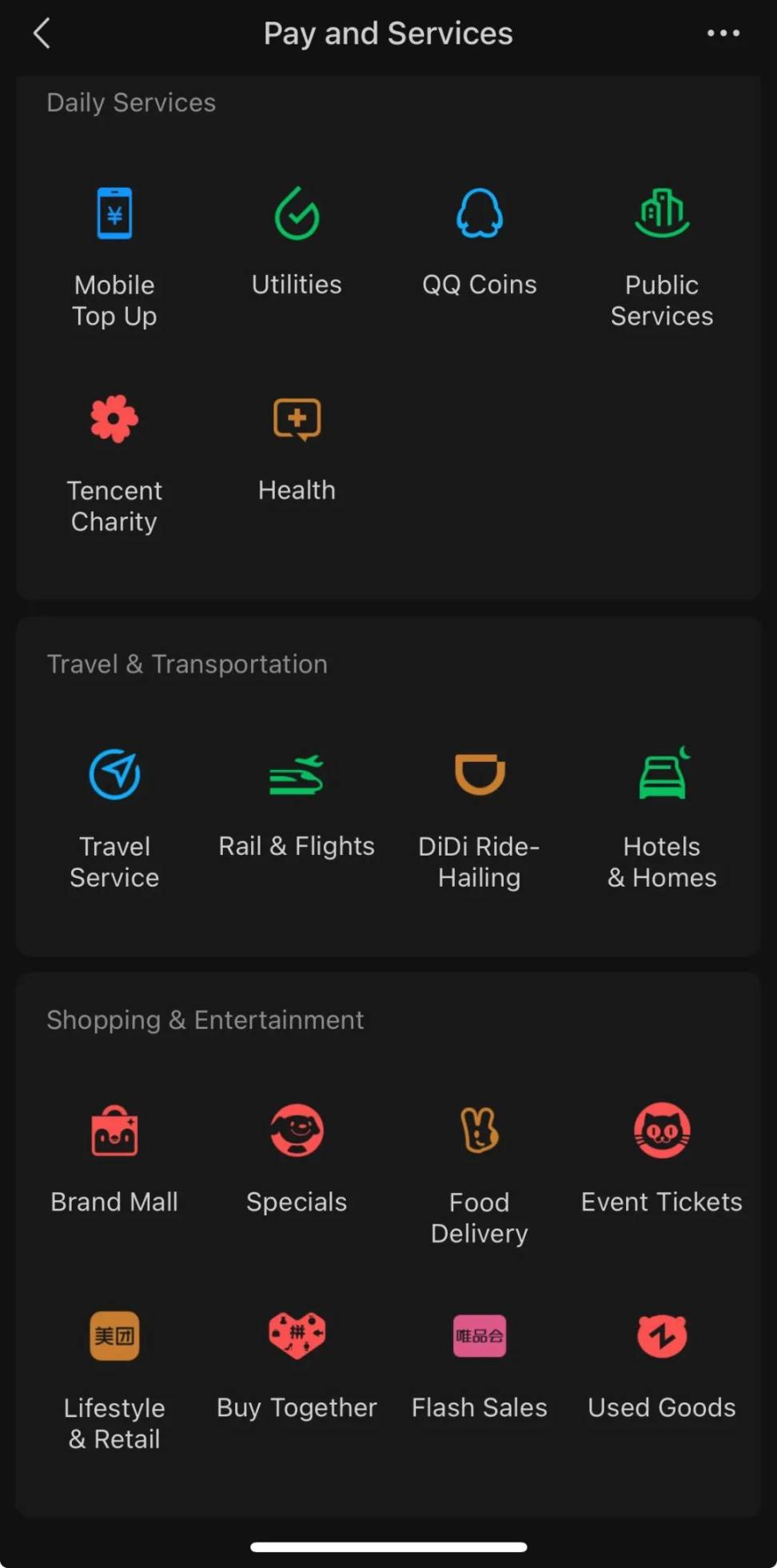
Currently, the TON wallet and dApps are deeply integrated into Telegram in the form of mini programs. Users can conveniently manage their digital assets and achieve seamless interaction with the ecosystem on Telegram. Unlike other blockchain projects, TON does not require additional user traffic; its applications rely directly on Telegram's large user base.
Compared to decentralized applications of other public chain projects, the user access threshold of the TON ecosystem is lower, allowing users to interact directly with projects within the ecosystem using the wallet application in Telegram. This seamless experience gives TON a significant user advantage, positioning it as a potential major platform in Web3.
For the TON community, integrating USDT into Telegram's wallet greatly improves the transaction experience. USDT on TON also provides an easy entry point for cryptocurrency newcomers, combining the advantages of digital currency with the stability of traditional fiat currency. Currently, the issuance of USDT-TON has exceeded $10 million, reflecting the ongoing demand for stablecoins within the TON ecosystem.
The TON wallet bot initially served as a custodial wallet, primarily suitable for internal transfers among Telegram users, with data not entering the blockchain but only changing in an internal ledger, facilitating instant, zero-fee transfers between users. Users' private keys are managed by Telegram and can be recovered via email.
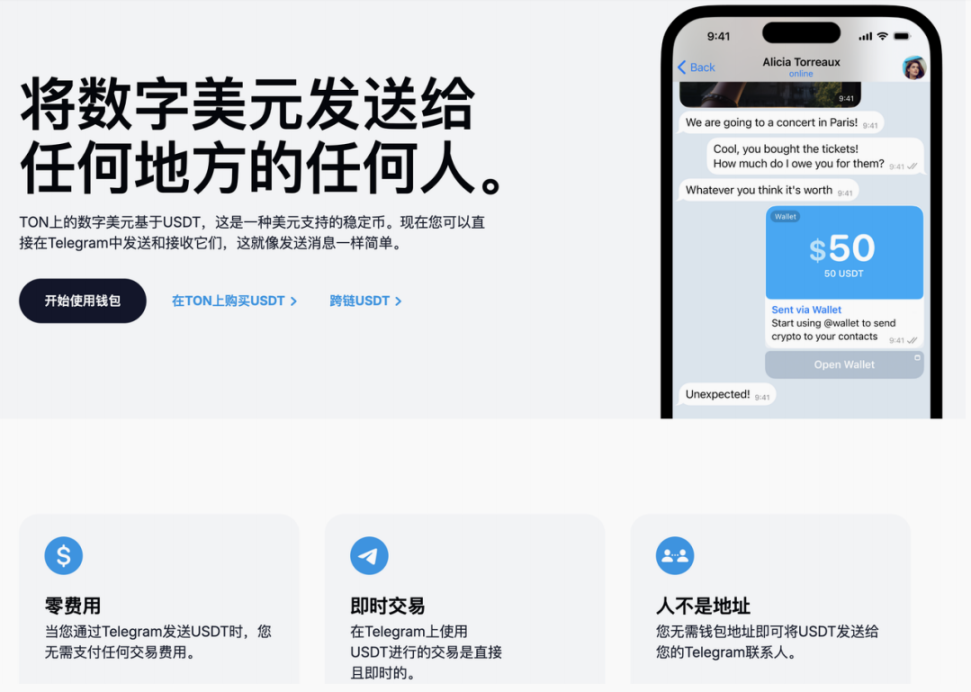
At the same time, the wallet bot integrates TON Space, providing a non-custodial wallet function, allowing users to have complete control over their private keys and assets. TON Space is integrated within Telegram, enabling users to directly manage digital assets, send, receive, store, and exchange cryptocurrencies. TON Space supports interaction with Web3 applications, allowing users to connect their wallets to dApps built within Telegram, such as Dex, GameFi, DeFi, and more.
The integration of Wallet with Telegram bots and services allows for efficient market updates, trading operations, and service payments all in one place. TON Space simplifies digital asset management, making it accessible to a broader audience while providing advanced features for experienced users.
Additionally, users can use the internal wallet to pay for Telegram Premium and advertising services on the Fragment platform, expanding their reasons to enter Web3.
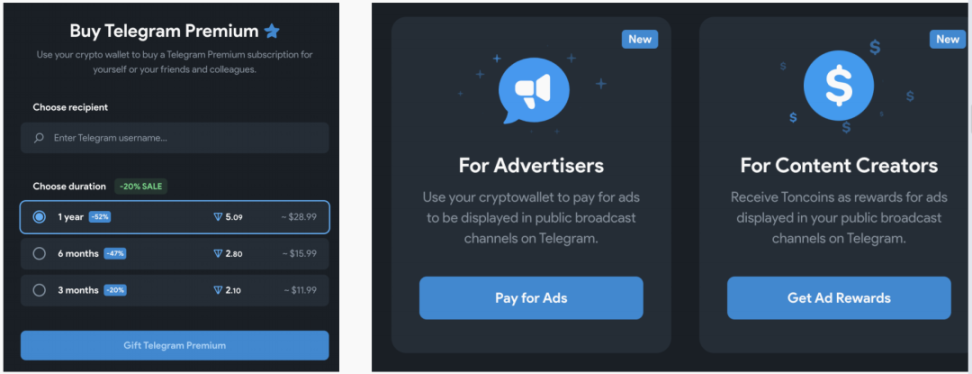
Pain Points of Web2 Social Platforms and TON's Solutions
Current Web2 social platforms face many pain points. For example, project teams find it difficult to effectively track user behavior during operations, as the authenticity of activities such as check-ins, shares, and forwards cannot be verified. This not only leads to low operational efficiency in communities but also requires centralized systems to manually operate incentive distributions, increasing operational complexity and making it difficult to ensure fairness and transparency. The inadequacy of incentive mechanisms further reduces users' willingness to participate, resulting in decreased community activity.
In contrast, TON can provide a decentralized solution. Through deep integration with Telegram, project teams can utilize Telegram's bots and TON's smart contracts (written in FunC) to automate community operations. Smart contracts can automatically verify user behavior and distribute token rewards based on the Jettons standard (similar to the ERC-20 standard) in real-time, avoiding inefficiencies and unfairness caused by manual intervention. TON's low-cost transactions and gas-free wallets further lower the participation threshold for users, making small, frequent transactions more practical within the incentive system.
Through these mechanisms, communities can effectively incentivize users to engage in voting, content creation, and other activities, enhancing overall community activity and participation. Through Jettons token distribution, users can not only participate in governance but also sell tokens for potential appreciation. Jettons tokens, based on the Telegram platform, may have broader uses and liquidity within the app. Additionally, Telegram bots allow project teams to manage these complex processes more conveniently, enabling users to complete the entire process without leaving Telegram, achieving automated community operations that other Web2 platforms cannot reach.
The Promotion of DAOs by the TON Ecosystem:
The core advantage of DAOs lies in their transparent and fair decision-making mechanisms, and the integration of TON and Telegram provides unique development opportunities for DAOs.
Telegram, as a messaging app, is an essential part of users' daily lives, providing more convenient user coverage for DAO community governance. Through Telegram bots, DAOs can easily manage proposals, voting, and reward distribution activities within groups. Users can participate in governance and discussions directly in Telegram without switching apps or navigating to a browser. Furthermore, compared to Ethereum, TON's low-cost transactions and gas-free wallets lower the economic threshold for DAO operations.
The deep integration of TON and Telegram will make the operation of communities or similar organizations like DAOs smoother and more user-friendly, with the potential to play a greater role in the creator economy, DeFi, and gaming communities in the future.
User Content Sovereignty and the Decentralized Future
In traditional Web2 platforms, user content is stored on centralized servers, meaning that users do not actually own the content they publish. Platforms can delete or block user content at any time according to their policies, leading content creators to face the risk of losing control over their content. Additionally, the long-term accumulation of content cannot be converted into definite digital assets, which somewhat reduces creators' motivation.
TON's decentralized storage addresses this issue. According to its development roadmap, TON plans to launch applications similar to Dropbox, allowing users to have true content sovereignty. Once content is on-chain, it cannot be arbitrarily deleted or banned, enabling creators to freely manage their digital content assets. This provides content creators with autonomy over their content assets, freeing them from the constraints imposed by Web2 platforms.
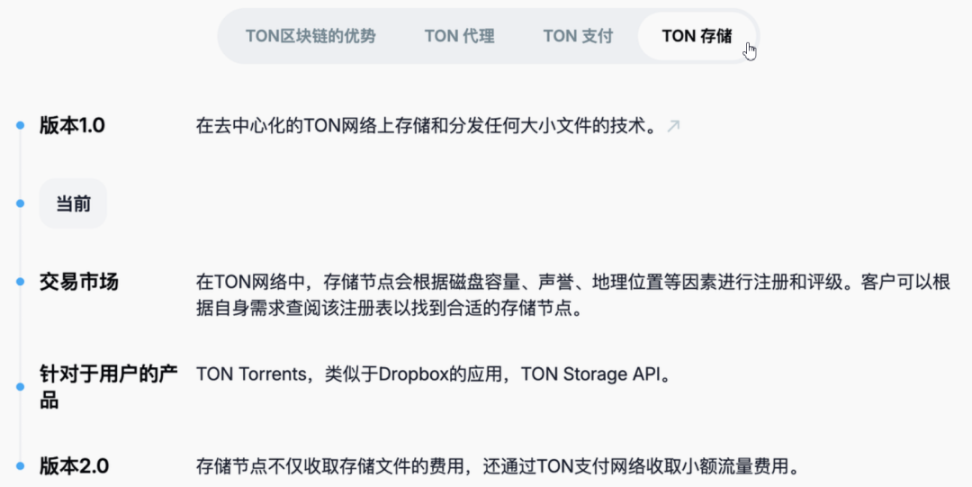
Platforms like Farcaster demonstrate the potential of decentralized social platforms. Farcaster utilizes Ethereum as a user identity layer, combined with distributed storage to provide users with scenarios for content publishing and interaction.
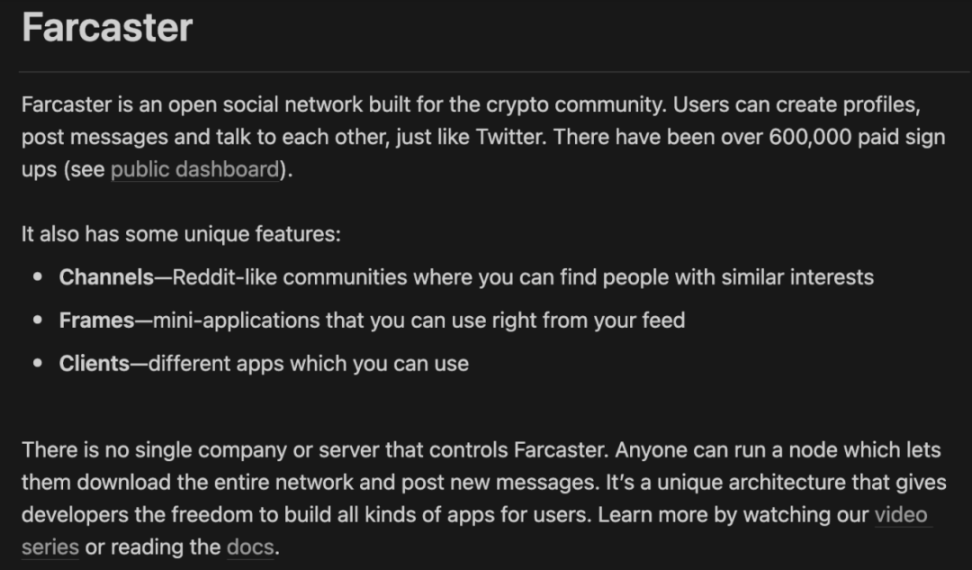
Farcaster is an open social network built for the crypto community. Users can create profiles, post messages, and interact with each other, just like on Twitter. There are over 600,000 paid registered users.
It also has some unique features:
- Channels—similar to Reddit communities, where you can find people with similar interests.
- Framework—mini applications that can be used directly from your information stream.
- Clients—different applications you can use.
No single company or server controls Farcaster. Anyone can run a node, allowing them to download the entire network and post new messages. This unique architecture empowers developers to build various applications for users. Learn more by watching our video series or reading the documentation.
Drawing on the experiences of decentralized social platforms like Farcaster, TON has the potential to further reduce the cost of creators putting content on-chain through its dynamic sharding technology, encouraging more creators to participate in a decentralized content creation ecosystem.
In this model, TON, combined with Telegram mini-apps, can provide users with functionalities similar to "Knowledge Planet." Knowledge Planet is a popular content community platform in China where content creators can operate their knowledge communities and even achieve a commercial closed loop. In the TON ecosystem, this model will have more decentralization and autonomy, allowing creators not only to control their content but also to directly engage in economic interactions and incentives with their communities, achieving the creation and commercialization of decentralized personal content IP, establishing their own decentralized content stronghold, free from the control and suppression of Web2 platforms.
Comparison of TON with Other Public Chains: Ethereum and Solana
As a Web3 infrastructure, TON's core advantage compared to mature blockchain platforms like Ethereum (ETH) and Solana (SOL) is its blockchain built for high performance and scalability.
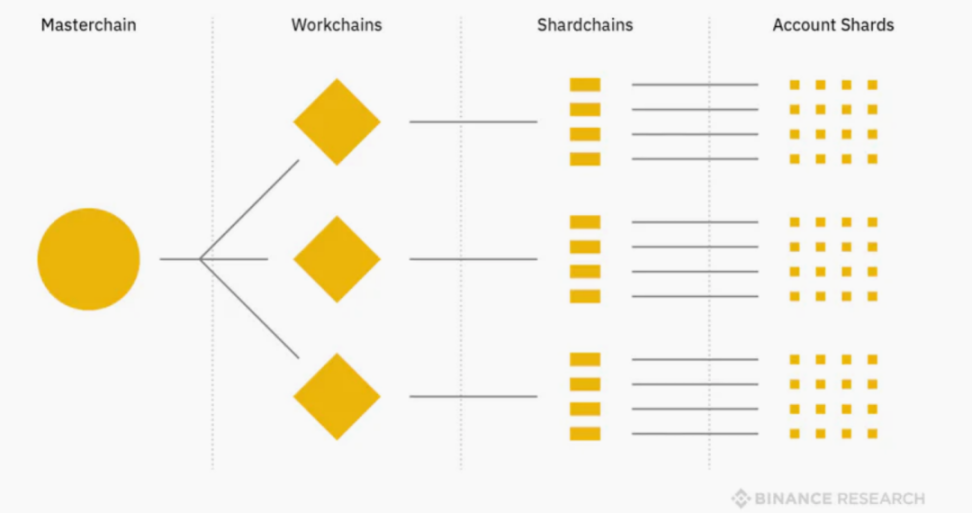
Its "dynamic sharding mechanism" allows for the sharding into separate chains (working chains and shard chains), enabling TON to "distribute" transactions, effectively solving the bottleneck of processing transactions on a single blockchain, allowing the network to handle millions of transactions per second and efficiently scale with the growing user base.
Here is a comparison:
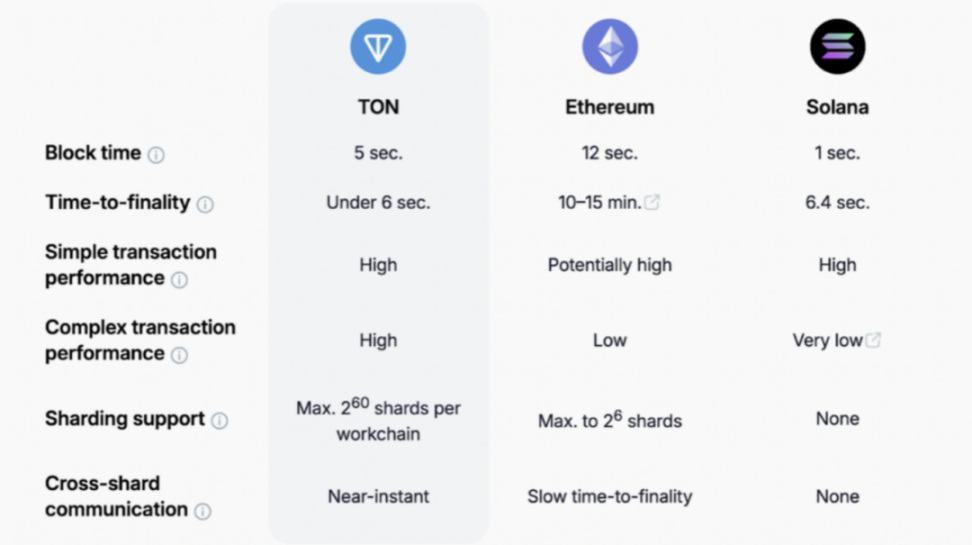
- Ethereum (ETH): As the most mature public chain, Ethereum has a large developer community, a well-established ecosystem, and a smart contract standard (ERC-20). Ethereum hosts a wealth of DeFi, NFT, and dApps, allowing almost all Web3 project developers to quickly launch projects using existing tools. However, Ethereum's scalability issues have been a concern, with high gas fees and slower transaction confirmation speeds hindering user experience. While Layer 2 can address some of these issues, it requires new native tokens for support.
- Solana (SOL): Solana stands out for its high transaction speed and low fees, becoming an important platform for DeFi and NFT projects. Solana's TPS (transactions per second) is significantly higher than Ethereum's, but its level of decentralization has been questioned, and frequent network outages have affected its stability. In contrast, TON's dynamic sharding technology not only ensures efficient transaction processing but also maintains a high degree of decentralization and stability, providing Web3 users with a superior experience.
- Advantages of TON: TON is more competitive than ETH and SOL in terms of block generation speed and transaction confirmation. Ethereum takes 12 seconds to generate a new block, with transaction confirmation taking about 10 to 15 minutes, while TON completes block generation in just 5 seconds and transaction confirmation within 6 seconds. Additionally, TON supports dynamic sharding, making it possible to handle large-scale transactions.
However, TON's challenge lies in the relative scarcity of its development ecosystem. Compared to Ethereum's Solidity programming language and mature development tools, the FunC programming language used by TON has not yet gained widespread adoption. This makes it difficult for many developers and applications from the Ethereum ecosystem to migrate directly to the TON chain. TON's development documentation and tools are still being improved, requiring more time and resources to attract developers to join the ecosystem.
Future Prospects and Challenges for TON
Despite TON's significant advantages in technology and ecosystem, whether Telegram can become the "WeChat" of the Web3 era still depends on several key factors. First, Telegram needs to further lower the barriers to using Web3, allowing Web2 users to easily enter the Web3 world. Second, the TON ecosystem must attract more developers and project teams to participate, launching more "killer" applications to enhance user stickiness.
The current popularity of the "Tap to earn" mini-game model may only represent a false prosperity in terms of daily active users (DAU). Without impactful killer applications being implemented, the TON ecosystem may struggle to sustain its development. However, with a massive user base already in place, future development may be more optimistic. Because regardless of the narrative approach, without a continuous influx of fresh external traffic, it will be like a pile of loose sand, difficult to form a stable and sustainable development trend.
The deep integration of TON and Telegram lays the foundation for it to become the "WeChat" of the Web3 era. Through on-chain storage, decentralized payments, and smart contracts, Telegram has the potential to provide users with a one-stop decentralized experience. However, TON needs to continue enhancing its development ecosystem and address the pain points of Web2 users transitioning to Web3. As TON's technology continues to improve and its ecosystem expands, Telegram may become a core platform in the Web3 era, achieving a significant transformation from a social application to a blockchain ecosystem application.
免责声明:本文章仅代表作者个人观点,不代表本平台的立场和观点。本文章仅供信息分享,不构成对任何人的任何投资建议。用户与作者之间的任何争议,与本平台无关。如网页中刊载的文章或图片涉及侵权,请提供相关的权利证明和身份证明发送邮件到support@aicoin.com,本平台相关工作人员将会进行核查。




